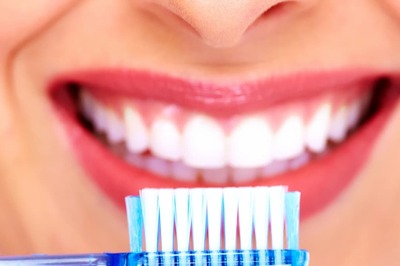
views
A 13-year-old cut his left arm after he believed that his girlfriend was seeing someone else. The child was also troubled by his own parents who were fighting a bitter divorce battle. He had scholastic issues for three years that added to the emotional burden. His two male friends who empathised with him also cut themselves in a show of solidarity. One of the two friends was not staying with his parents and the other had been witnessing violence at home.
In recent times, I have seen complex psychopathology (multiple triggers and stressors) among many teenagers who talked about self-harm. Most of the time, the issues are complicated as there are many difficult stories behind the visible ones. Long working hours for bread earners, rapid social change, diminishing emotional contact time and family contact time, poor connectivity with loved ones, preoccupation with gadgets, financial issues, the feeling of not looking good, breakups and lack of play are some of the reasons. Most of these factors are the adverse effects of globalisation.
Following are a few answers and solutions-
Building support systems
Building support mechanisms among peers with the school teachers/counsellors as facilitators can help. Promoting a sense of togetherness among the youth is the key. Educational institutions can provide a buffer and provide a sense of calm. A 14-year-old student felt nice when he was allowed to teach some parts of the subject of Science that he liked by his teacher. Another teacher in a school believed that in her class of 45, there were 46 teachers and many taught some chunks of their syllabus that they enjoyed. Such a philosophy can take different routes, shapes and activities.
Helping all children, especially the difficult ones to find purpose, meaning and joy in life, offsets the exaggerated pain of little stressors. Providing simple tools of coping that include yoga and meditation aids the mind. Allowing the free flow of emotions with teachers helps avoid catastrophes. I know of so many educators who invite such difficult adolescents to their homes on a weekend off and on. This enhances bonding and support and builds confidence among the young. Teachers who convert subject matter into stories and are powerful animators enjoy better rapport with kids and are more effective. When educators share their personal stories, and not their glories, along with feelings, that are age-appropriate with kids sensitively, the adolescents are empowered to share theirs. Yet those who are at high risk and are very depressed need specialised treatment with a psychiatrist and/or a psychologist.
I may look audacious or crazy if I proclaim that 50 per cent of the time schools and colleges should focus on mental health but that is necessary in today’s era where suicide clusters are very common, such as in Rajasthan’s district Kota. Such events may also include vigorous healthy extracurricular, cultural and sports pursuits. Teachers need to create an environment where distress, depression and thoughts of self-harm are reported immediately to the adults in the system. Trained mental health buddies or healthy ‘khabris’ (mental health soldiers) among students can be of assistance.
Use all available resources
Biological parents believe that they are the only anointed primary carers of their adolescents. They forget that there are secondary parents among mindful and sensitive extended family members, tertiary parents among mature neighbours, self-appointed parents and grandparents.
A 14-year-old girl eloped with a 19-year-old boy for 15 days. As she came back, the family whisked her away to a resort along with them and hid for six months. The girl’s mother was scared about the reputation of the family and refused to solicit support from her lovely three brothers. She preferred silence, isolation and a pressure cooker safety than sharing the pain with her loved ones. For me, reputation is a fantasy as there is no family that is not struggling with difficult stories at some point of time in life. A 17-year-old girl who was unreasonably rebellious and harboured thoughts of self-harm wanted to marry a roadside rowdy in her locality. She was only amenable to her favourite school teacher and saw reason after all relatives, mental health professionals and friends failed. I have also seen housemaids to be of great help to help teenagers tide over their crises. My sons are very close to their nanny who looked after them as small children along with us and keep in touch across time with so much affection and gratitude. A 14-year-old boy who was sodomised by a 21-year-old neighbour and wanted to die opened up to a friendly police officer after a string of teachers and mental health professionals failed.
Yet, I would reaffirm that mental health professionals will always be the first stop while tackling distress and self-harm thoughts but they, along with parents, should be wise and open enough to use all traditional and non-traditional resources that are available alongside.
Manage Unreasonable Shame
A coffee magnate died of self-harm some years back as he was overburdened and ashamed with loans that he could not pay back in time as compared to an airline honcho in a similar situation who simply vanished. A 12th standard topper who scored fewer marks in her law college reported thoughts of self-harm in the first year. Breakups, low grades or self-worth, poverty, and family issues can lead to excessive shame and self-harm thoughts among the young. Many teachers congratulate students for attempting to answer in class even when they are wrong and also practice equity, enhancing the self-esteem of the young. I know of a college where teachers share their past failures with students during induction and otherwise, ‘as it was’, without projecting themselves as martyrs or chest-thumping heroes.
Students caught copying in exams need to be treated with compassion though they may need to face administrative actions. The young who are emotionally disconnected and ashamed of themselves for whatever reason need urgent attention. Teenagers who accept their physical self exactly as it is are better off than others. A young boy, who was obsessed with being on the podium always, recently absconded from his home after flunking a test and was found after nine days. His perspective of life changed after he was assigned one month of seva in a spiritual organisation of his choice along with professional counselling. His worldview changed forever.
In my workshops with the young, I normalise breakups because if one is in a relationship during the teens, the chances of a breakup are always very high. Love can have birth, growth and death is a reality that kids need to know. Union and separation are two sides of the same coin. Life skills training for teenagers is a must. Dr. Carl Fleisher, a specialist in Adolescent and Child Psychiatry at UCLA (March 2022), states that “not all suicides are attributable to depression. While depression is a risk factor for suicide, half of the people who take their lives had depression.” So 50 per cent of those who die of suicide have no mental illness. The minds are brittle as anger, angst and alienation are a norm across metros, towns and many villages in India. In a UNICEF survey across 21 countries, only 41 per cent of young people in India said that it is good to seek support for mental health problems, compared to an average of 83 per cent for 21 countries (2021). The causes here are shame, stigma and poor awareness that needs to be addressed.
Peep Next Door
A young girl complained to me that her cousin had stopped talking to her in a family group and believed that she had attitude issues. I nudged her to ask her if she was sad and low and the answer was yes. Teenagers should be encouraged to peep and check on friends, neighbours and acquaintances in housing complexes, neighbourhoods and educational institutions. The fake barriers of the so-called ‘it is their life and we need to respect their privacy’ should be shattered.
In my visit to schools, I see an increase in violence against children by parents in recent years. Roughly 1/7th of kids experience violence from parents and the reasons are excessive gadget use, low grades, talking to the opposite sex and failure to obey parents. In a school when a few eighth standard kids saw marks of violence on the body of their peer, they alerted their teacher. When the parents were summoned, it was discovered that the mother was clinically depressed and untreated. The violence stopped after she saw a psychiatrist. 83 per cent of children face violent discipline from caregivers in the world’s least developed countries (UNICEF 2021). I advise screening of parents and students periodically to check for depression. The numbers that come up are alarming and shocking but this helps early intervention. Teenagers who are aware, report mental health issues in their own parents and that of their friends’ parents too. Managing distress and depression among parents aids in the healthier emotional development of teenagers. 50 per cent of mental health problems in children begin by the age of 14 (WHO 2021).
Treating Gadget Addiction
Excessive use of social media is directly related to poor sleep quality, depression, suicidal thoughts and altered brain development (Social Media and Youth Mental Health 2023: The U.S Surgeon General’s Advisory). Many students who have been addicted to social media have lost their lives when correction of the same was attempted by parents in India. “There is little robust evidence on digital technology’s added value in education,” states UNESCO’s document ‘Technology in education: a tool on whose terms?’ It also states that 1/4 of countries have restricted gadget use in schools by law and guidance. Students who gravitate to excessive gadget use may be those who are excessively sad, have nothing to do, suffer from excessive overthinking, seek peer comfort, are shy, suffer from scholastic issues and have difficult parents.
Gadget/social media addiction, depression, loneliness and self-harm are related. We are in the middle of an epidemic of gadget addiction. When there is an epidemic, campaigns are the key. They are successful when they are initiated and inspired by students or parents. An interesting innovative experiment in a village named Mohityanche Vadgaon in the Sangli district of Maharashtra is an inspiring example for all. Here gadgets go quiet when a siren announces every family to close their gadgets for a particular period.
“Mental health is too important to be left to mental health professionals alone,” said the late legendary Professor N N Wig, a revolutionary psychiatrist who worked with the WHO many decades ago. It takes a whole village to raise a child and we need a crusading mental health movement to prevent deaths due to self-harm among our teenagers in India. Let us join hands with each other and connect the dots to prevent suicide and save lives.
Dr Harish Shetty is a Psychiatrist and has been working with students across three decades and conducts sessions in educational institutions regularly. Views expressed in the above piece are personal and solely that of the author. They do not necessarily reflect News18’s views.



















Comments
0 comment